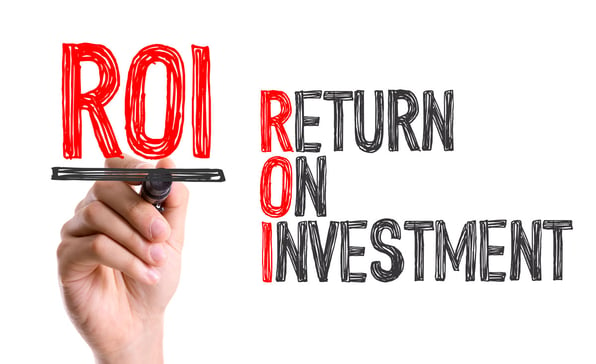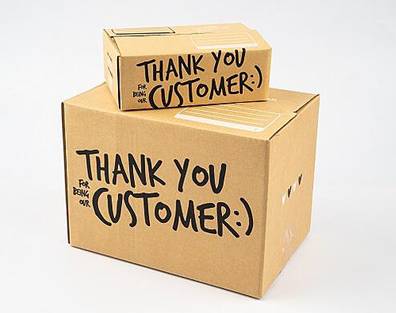Membership Discount Programs: The ROI of DIY
Typically, organizations partner with a discount program provider, but what about creating one yourself? This article discusses critical factors to help you decide if a do-it-yourself discount program is right for you. About a 4 minute read.
I don’t know about you, but when I see something cool someone created online, my first thought is “I could make that.”
A few times, I’ve succeeded in making my own version and even enjoyed the challenge of creating with my own hands. Some of my favorite things I own are things I’ve made.
More often though, I’ve found the effort not worth my while.
Sometimes I discover that the cost of materials, tools and my time will add up to make my DIY cost more than simply purchasing a finished product.
Sometimes my estimate of how long it will take is waaaaay off, which usually means I never get around to finishing it when life gets busy.
Sometimes I’ve find that my own skills are so lacking that the final product is only worthy of a #pinterestfail hashtag and the ironical label “Nailed it!”
And sometimes I’ve just found that I don’t enjoy a task. At all.

At least all this trial and error has given me a better sense of what DIYs to embark on, and what tasks are better left to professionals.
Organization leaders are often faced with the same dilemma. Do you pay the cost to purchase something that will benefit members? Or can you "do it yourself" in a bigger, better and/or cheaper fashion?
This dilemma is especially true when deciding to offer discounts as an exclusive member benefit.Membership Discount Programs Offer a Great ROI
No matter where it comes from, a well done discount program is a proven way to engage your members. That’s because when a member benefit is used often, it helps members form an emotional attachment to the providing organization. And when you consider that up to 90% of the population uses coupons, you’ll understand why people respond so positively to discount benefits.
And love isn’t the only thing you’ll get in return from happy members. All this emotional investment will show on your bottom line. Engaged members are more likely to renew year after year, and purchase other organization offerings. For example, this study by Gallup showed that people with a high engagement score achieved 50% higher revenue and 34% higher profitability. In short, investing in your members means they’ll invest in you.
Build it Yourself or Partner with Professionals?
 If you’re like me, you might think a do-it-yourself discount program sounds like a fun and worthwhile challenge. And perhaps it will be for you. However, it’s not wise to jump in without first preparing, so let me save you a little time.
If you’re like me, you might think a do-it-yourself discount program sounds like a fun and worthwhile challenge. And perhaps it will be for you. However, it’s not wise to jump in without first preparing, so let me save you a little time.
Here are some questions to ask yourself before you start. This will give you an idea of what to expect. Then, you can decide whether you already set up to succeed… or if you’re in danger of running into any common DIY pitfalls.
- What kind of discounts do you want for your members: a few highly targeted discounts related to your industry? Or a wider base of everyday discounts that would appeal to any person?
- Do you have the skills/desire to negotiate with businesses for deals? To advertise the value to members and encourage usage?
- Do you have the staff to maintain ongoing merchant relationships and provide the support for members who want to redeem them?
- Do you have the website security to provide merchant partners with the confidence that their deals will not get abused?
The Cost of Building a Discount Program
The first major cost of building a discount program comes in the form of time. Your time is valuable so it’s important to calculate the hours you spend as part of your investment.
First of all, it takes time to build relationships with merchant partners and negotiate better-than-average deals. You probably already expected that, but your job won’t end there.
You’ll also be responsible for encouraging members to use their deals. Regular usage is a critical if you want a good return.

And even after you’ve built a good base of discounts, you’ll have to maintain those relationships going forward. Ideally, this will simply mean renewing the deal each year. But it could also involve renegotiating with new management, removing when companies go out of business, etc. Many times this means intervening on behalf of members who have trouble redeeming.
This leads us to the second major cost of running a discount program on your own: technology upgrades. In order to keep track of all your merchant relationships, you’ll want a database to store those all-important contracts, as well as a detailed accounting of your interactions.
Beyond that, our tech-savvy populace loves a seamless website and mobile app experience. So you may need to overhaul your technology in order to provide acceptable levels of security to merchants and usability to members.
Here are some signs you’ll likely enjoy a good return on investment when building your own discount program:
- You’re looking for a small number of highly targeted offers related to your organization. The great news is, organization leaders are probably the best people to negotiate targeted offers on behalf of members. In fact, it could represent an excellent direct partnership. Members interested in your organization are likely to be the target audience for related merchants. Some may jump at the chance to market an offer to your member base.
- You already have the skills, tools, time and support you need. Or at least some of each. Remember that each hour you spend learning, each upgrade you make to your technology, each person you hire to support your program will eat into your returns. Calculate realistically based on your current vs needed resources. If the return is high enough, go for it. The benefit of gathering your resources beforehand is that you won’t be surprised, or worse, feel like it would be better to quit after you’ve already put in a bunch of time.
- You or someone on your team enjoys these tasks. You’ll need someone with good selling skills to convince merchants to participate with high-value offers in order for it to be a real benefit to members. Businesses are approached all the time by organizations looking to dip into their profit margins, so you may need to make a compelling case for how you can drive traffic. On that note, you’ll need someone to advertise the benefits to your members, effectively conveying the value so they use the deals. People who are enthusiastic in a task are more likely to succeed.
The Cost of Working with a Provider Partner
 A quality discount program does come with a price tag. However, keep in mind that when you partner with a quality provider, you’re buying more than a great network of discounts. You’re also paying for the support you need to make the benefit successful.
A quality discount program does come with a price tag. However, keep in mind that when you partner with a quality provider, you’re buying more than a great network of discounts. You’re also paying for the support you need to make the benefit successful.
As with all investments, the less you can spend for desired results the better, right? Just don’t forget the “desired results” part. Unfortunately there are a lot of discount programs out there promising great value for free, or even to help you make money off your membership through back-end revenue deals.
This may sound great on the surface, but these programs are full of aggregated, low-value and online-only deals. At best they are uninteresting to your members. At worst, they can hurt your reputation when they fail to deliver on promised value. If the value is so low that members are not using your program, you’ve got no return. Even if you put in zero investment to get zero return, mortgaging your audience’s trust is not a good ROI.
The best discount programs offer an ongoing partnership of support. This might include any of the following: merchant compliance, customer service, member marketing, usage contests, internet security, and more.
And if you’re worried that a prepackaged program won’t come with enough industry specific discounts that will be of special interest to your members, consider this. Many partners are willing to solicit deals on your behalf to merchants of your request. Or, they can integrate any deals that you’ve already negotiated together for a seamless benefit.
For example, a rapidly growing sports organization recently partnered with us here at Access. Leaders had already built an impressive offering of deep discounts that appealed to avid players of the sport. However, their member base was growing to include casual players too.
They wanted a broader range of discounts that would appeal to a more diverse group of people. They knew they couldn’t build what they were envisioning, as scaling up their efforts was beyond their resources. Together we designed a program that included both their industry specific discounts and our everyday savings. You can read all about it in this case study.

Here are some signs a private-label discount program is likely to yield a good return on investment:
- You need a variety of lifestyle discounts that will appeal to a demographically diverse base of people or can help them save on everyday necessities. Building and maintaining such a huge breadth of discounts is not a realistic goal for a small team. The best discount programs are built and maintained by large companies of people who have (1) the necessary systems in place and (2) specialized experts in each step of the process, from sales to marketing to internet security. That’s why they come with a cost.
- You have (or can justify) a recruitment and retention budget. A quality program will be an ongoing investment, but many organizations know that recruitment and retention are goals well worth a dedicated budget. Fortunately by working with a quality third party you should be able to benefit greatly from economies of scale.
- You prefer your program to be designed and run by experts. This is understandable. Most organization leaders have enough on their plates without adding more responsibility. Becoming an expert in one more field may not be high on your list of priorities.
DIY or White Label, Your Members Win Either Way
A quality discount program takes a lot of work to build and maintain. And only you can determine if you have the time, tools, skills, and desire to build your own successful discount program. But with realistic goals and some determination, you can provide your members with quality discounts they can enjoy for years.
Or, if you want a ready-to-launch solution without the work, consider a white label discount program from Access Development as an option. With over 30 years experience building membership discount benefits, Access has the largest private network of everyday discounts at top rated restaurants, shops, hotels and more.
Call us at 800-840-0032 or visit www.accessdevelopment.com to learn more.
Related articles:
20 Keys to Unlocking an Effective Member Discount Program
Why "Private" is So Important to Discount Programs
The Relationship Between Member Benefits, Discount Programs and Successful Associations
Topics: Customer Engagement, Discount Programs, member retention, discount program, member engagement, Membership Organizations, loyalty programs, member loyalty, membership discounts

Written by: Kendra Lusty



.jpeg)







Share your Comment.